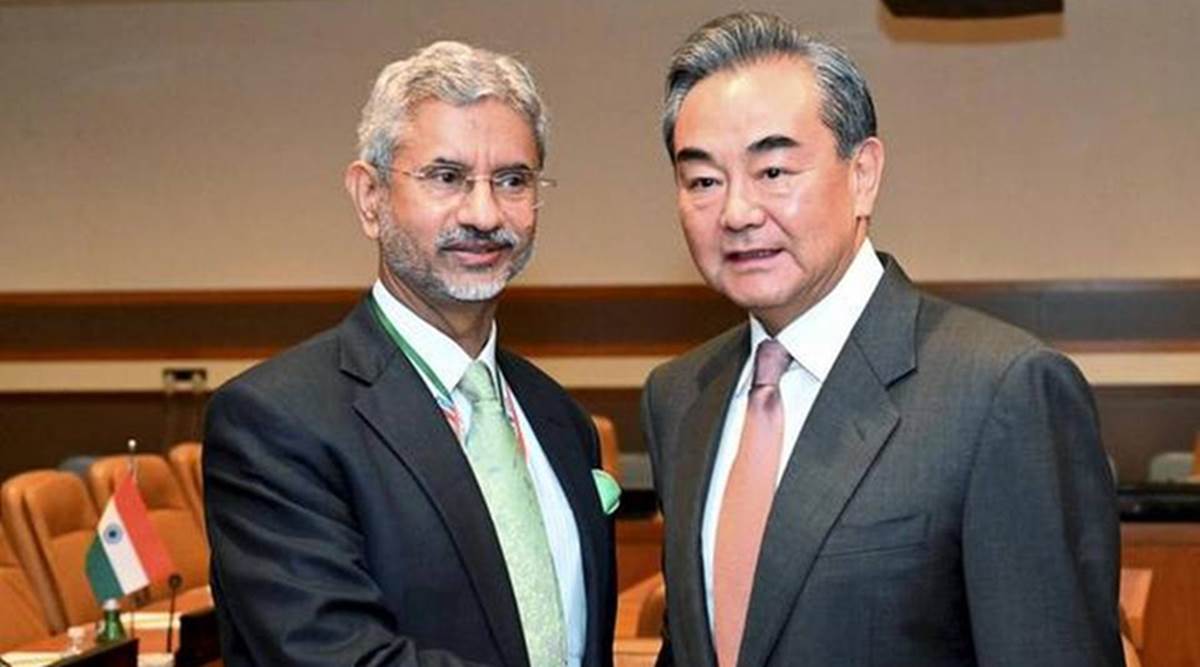
[ad_1]
 S Jaishankar with Chinese Foreign Minister Wang Yi. (Photo: PTI/File)
S Jaishankar with Chinese Foreign Minister Wang Yi. (Photo: PTI/File)
The day after Indian and Chinese Defence Ministers met in Moscow, the highest level in-person meeting between the two sides since the Ladakh standoff began early May, officials in New Delhi indicated they are watching whether General Wei Fenghe has the heft to influence the Beijing top brass on complete disengagement and de-escalation along the Line of Actual Control.
While both sides stuck to stated positions and blamed each other in official statements issued after the meeting, Delhi will wait for the next steps on the ground. There is a view within South Block that this time the Chinese will be tested on the sincerity of their commitment to the resolution of the crisis, especially after Indian troops occupied strategic heights along the LAC in the Chushul sector.
Until Friday, in-person conversations had taken place between military commanders and diplomats. Conversations at the level of Foreign Minister and National Security Advisor took place via videoconference. But the talks were not able to provide a breakthrough, barring some initial disengagement after Special Representatives, NSA Ajit Doval and Chinese State Councillor and Foreign Minister Wang Yi, had a videoconference on July 5.
There has been no forward movement on the ground since mid-July. But after Indian troops occupied heights in the Chushul sector for area domination — this was a pre-emptive move to block Chinese attempts to occupy those vacant heights — the needle moved Thursday when Wei Fenghe sought a meeting with Defence Minister Rajnath Singh.
The Indian side agreed to the meeting, and the two ministers met in Moscow on the sidelines of a meeting of the Shanghai Cooperation Organisation.
New Delhi believes that after India occupied heights on the south bank of Pangong Tso and Rechin La, it “evened the table” — the Chinese had occupied heights at Finger 4 and the stretch between Finger 4 to Finger 8 on the north bank of the lake.
Read | India insists on full pullback, warns against further action; China points to lost territory
Officials said India can now negotiate from a position of strength since the Chinese have been reluctant to disengage from the Pangong north bank, Gogra Post and the Depsang Plains. Troops of the two armies are within firing range of each other in the Chushul sector where tanks and artillery have also been deployed.
With both sides staring at the prospect of holding their positions through the harsh Ladakh winter, the Moscow meeting signals some sense of urgency to disengage.
Indian officials say what has to be watched is the extent to which Wei can influence the top brass in Beijing. The Chinese Defence Minister is not as powerful as the Indian Defence Minister in the civilian-military leadership calculus.
Read | Rajnath Singh arrives in Tehran, to discuss defence ties with Iran counterpart
In China’s Central Military Commission (CMC), the apex military body, President Xi Jinping is its Chairman while two Vice Chairmen, Xu Qiliang and Zhang Youxia, outrank Wei Fenghe.
Wei is one of the four members, along with General Li Zuocheng, Admiral Miao Hua and General Zhang Shengmin.
In contrast, Singh is Number 2 in the Union Cabinet’s pecking order, after Prime Minister Narendra Modi.
One factor that Indian strategic planners are banking on is the already stretched PLA. China’s eastern border is quite active because the Taiwan issue has been at the centrestage in the last few months, and the extent of the deployment that the Chinese can make on their south-western border is being watched in New Delhi.
The international environment too is a challenge for the Chinese establishment. While the US administration under President Donald Trump, facing a deeply polarised election at home, has been hostile to the Communist Party of China (CCP), a network of strategic and like-minded countries — Japan, Australia, India and Europe (Germany just released its Indo-Pacific strategy) — are getting ready to counter the Chinese. At a time like this, New Delhi feels it will be difficult for Beijing to escalate the situation along the LAC.
While all these factors are being pondered over before the next steps are taken, what has also emerged is the emergence of Russia as a neutral ground for Indian and Chinese leaders to engage each other. This has been evident since June when Russia emerged as a key diplomatic player amid the tensions between India and China.
Russian Foreign Minister Sergey Lavrov hosted the Russia-India-China trilateral meeting of Foreign Ministers on June 23, the first opportunity for External Affairs Minister S Jaishankar and Chinese Foreign Minister Wang Yi to meet each other over videoconference, after the Galwan Valley clash.
Moscow hosted Rajnath Singh and Wei at the Victory Day parade on June 24, along with Indian and Chinese marching contingents.
And next week, following the Singh-Wei meeting, Jaishankar will be there for a meeting of the SCO Foreign Ministers from September 9 to 11. This sets the stage for a possible Jaishankar-Wang meeting in Moscow. And that meeting, if it takes place, could hold the key to unlock the situation along the LAC.
📣 The Indian Express is now on Telegram. Click here to join our channel (@indianexpress) and stay updated with the latest headlines
For all the latest India News, download Indian Express App.
© The Indian Express (P) Ltd
[ad_2]
Source link